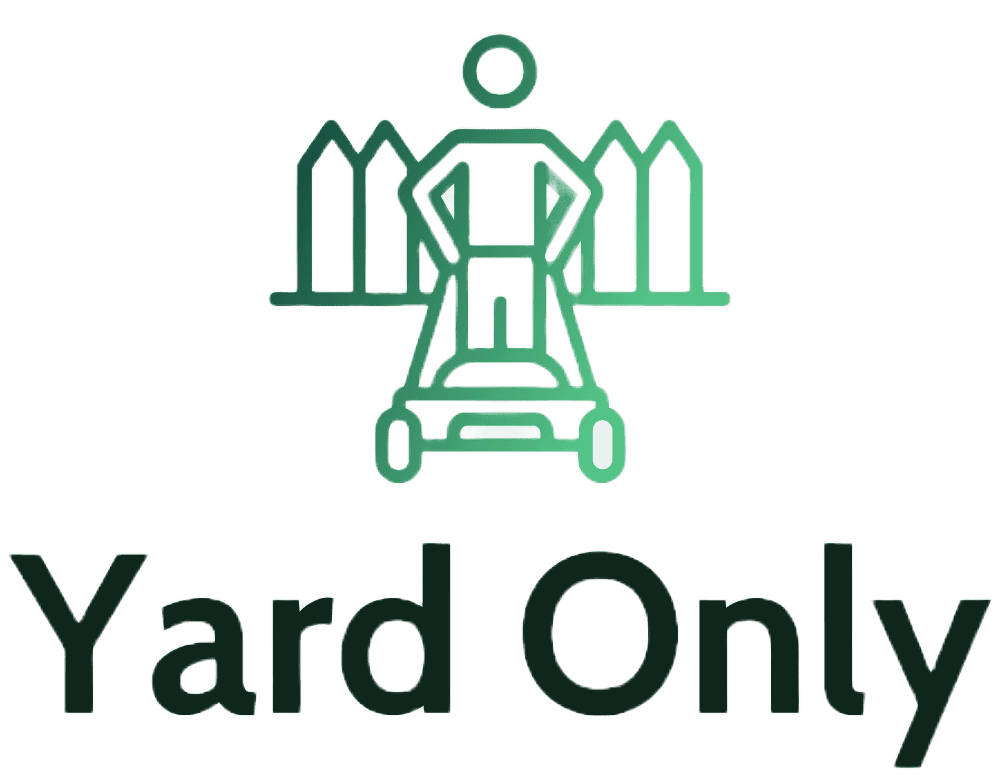Grass and soil gradually build up a layer of thatch in the lawns. It is a dense layer of living and dead plant materials. Although thatch may prevent roots from getting proper air and sufficient minerals, it is not harmful. It is beneficial for your lawn to have a thin layer of thatch on its surface.
Dethatching lawns has several Pros, such as cutting down on thatch buildup, keeping weeds away, cutting back on mowing time, and improving water drainage. Depending on the size of your lawn, dethatching can be very time-consuming.
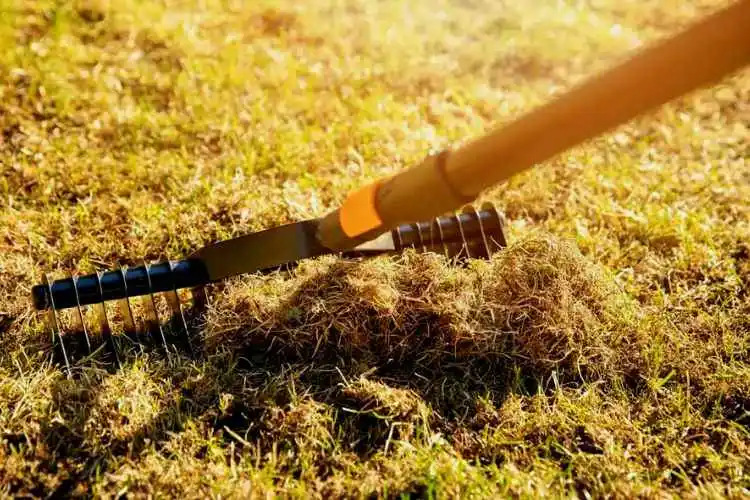
You may require repeated applications if your lawn has accumulated a lot of thatch. Soil drainage will vary based on your soil type and may not always improve.
Pros and Cons of Dethatching Lawn
Having a lawn dethatched is advantageous for several reasons. Below we have mentioned some of the main ones.
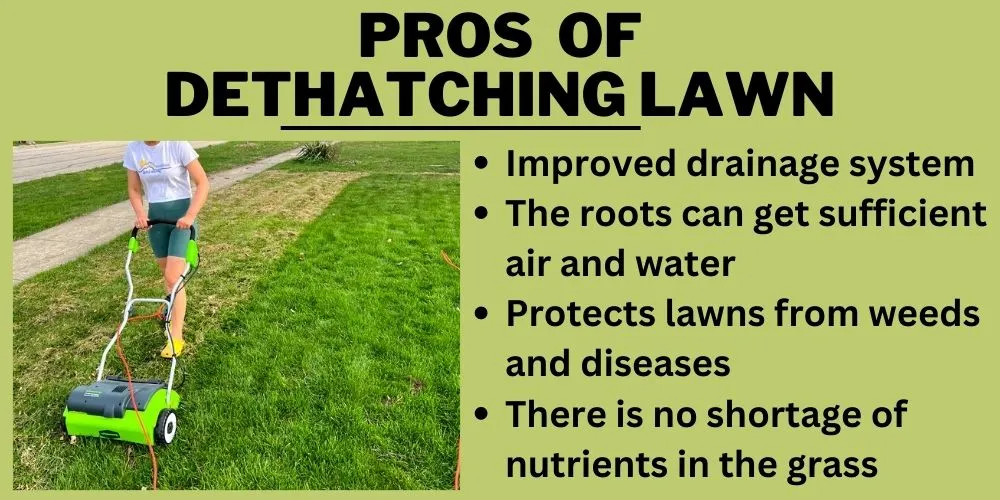
1. Improved drainage system
If you notice water sitting on your lawn for days after heavy rainfall, the soil beneath your lawn is extremely compacted. This soil needs aeration immediately. However, too much thatch could also be to blame. Having a thick layer of thatch is similar to having plenty of junk in the bottom of your sink.
It’s not conducive for the health of your lawn to have stagnant water just sitting there. Infections and diseases are the most common results. You can avoid these problems by dethatching your lawn to remove these natural plugs.
2. The roots can get sufficient air and water
To maintain a healthy lawn, both of these resources are essential. However, when the thatch layer is too thick, they absorb water, and air cannot penetrate properly. It feels like someone is holding your throat so you can’t drink or breathe properly.
Due to this, the plants start to change color; sometimes, they become brown and sometimes yellow. By dethatching your lawn, you will allow it to accessoth air and water, resulting in a lush green lawn again.
3. Protects lawns from weeds and diseases
It is difficult enough to keep a healthy lawn without having to deal with a variety of lawn diseases and pests. Your lawn cannot defend itself against these diseases if it has too much thatch. This is because it has reduced access to water, air and vital nutrients due to thatch buildup.
Lawns with a heavy layer of thatch are more likely to suffer from Microdochium Patch, Red Thread, and Leaf Spot diseases. Lawns with a lot of thatch are particularly vulnerable to chinch bugs.
4. There is no shortage of nutrients in the grass
There is no difference between grass and other plants regarding the need for nutrients. Nutrients such as nitrogen, phosphorus, and potassium are essential to its growth. If too much thatch is on your lawn, the grass won’t properly absorb the formulated fertilizers.

In addition to accelerated nutrient uptake by dethatching, your lawn will grow and improve its condition much more rapidly.
Dethatching Your Lawn: The Cons
Dethatching your lawn has pros and cons, so make sure you weigh both before deciding. Here are some cons to think about.
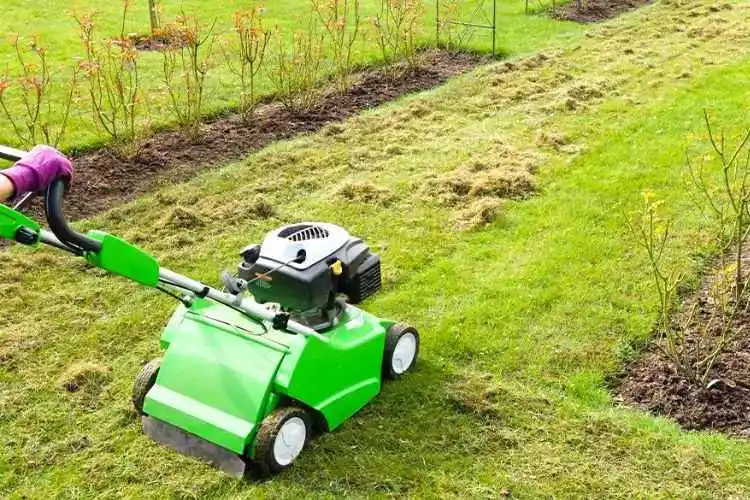
1. There’s Nothing Wrong with a Little Thatch
Many people widely hold the belief that all thatch is bad. You can benefit your lawn from a bit of thatch. It keeps a lawn warm during cold weather, protects from direct sunlight, and reduces the water that a lawn needs to survive.
Thatch can provide organic nutrients to the grasses, and a thatch-covered lawn can easily protect itself from foot traffic. These benefits will be lost if you dethatch your lawn.
2. The wrong timing can bring fatal consequences
When dethatching is done at the wrong time of year, it can cause significant stress to lawn grass, making it more susceptible to numerous lawn diseases. The grass may not recover if dethatching is done when it is dormant, so it should be done when growing.
A drought, for instance, can starve it of certain resources. Dethatching your lawn during these times can cause severe damage. Therefore, you ought to come up with a proper plan to handle thatch throughout the year.
How much does it cost to dethatch a lawn?
After knowing the pros and cons of dethatching lawn, It is extremely crucial to consider the cost when thatching a lawn. Depending on how much work is needed and if aeration is also included, dethatching a large yard may cost anywhere from $100 to $1000. If you have a small garden, it is not wise to make such a huge investment. But if you want to keep your big yard neat and clean, you must invest in a dethatcher.
Is dethatching a lawn worth it?
Dethatching in lawn care has been around for a long time. But is it really necessary for the lawn? – This is the most common concern. Thatch consists mostly of dead and living leaves, stems, and roots. It is a tightly woven layer that lies below the grass blades and on top of the soil. In many ways, thatch contributes to a healthy lawn.
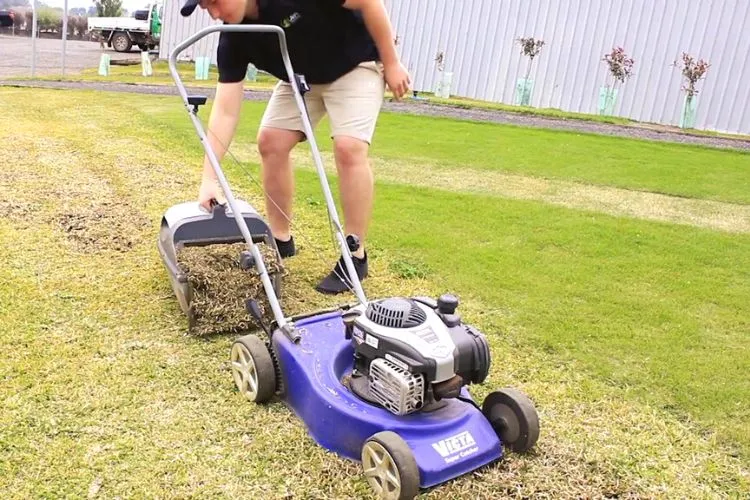
But it can damage your lawn when it becomes thicker than 1/2 to 3/4 inches. Thatch protects lawns when the temperature changes rapidly. It helps the grass tolerate foot traffic. A healthy lawn must have at least half an inch of thatch. Plant roots are protected from external disturbances by this layer.
If you dethatch such a lawn that doesn’t have enough thatch, it can negatively impact the lawn’s health. As a result of dethatching, the crowns and roots of the lawn are exposed to everyone. This results in poor visual quality. So it is wise to consult an expert before deciding on detaching.
Is dethatching good or bad for your lawn?
Many homeowners wonder whether thatch is good or bad. It is beneficial to have a thin layer of thatch on a lawn (less than 1/2 inch thick) to insulate it from extreme temperature changes and foot traffic.
Additionally, it helps keep soil moisture and reduces weeds. On the other hand, excessive thatch can cause a variety of problems. It can harbour diseases and pests and trap roots, placing them at risk of droughts and high temperatures. Insecticides, pre-emergent herbicides, oxygen, and water cannot reach the intended target if there is too much thatch. A thick layer of thatch can also cause mower scalping.
How do you get rid of thatch naturally?
Having too much nitrogen fertilizer, too much water, and frequent pesticide applications result in thatch on lawns. Matted grass blocks water flow and harbours pests, and the lawn looks sickly and unkempt due to dead clippings and lowers brown growth.
If you use the conventional approach of power raking and hauling loads of valuable organic matter to the landfill, you will have to repeat the feed and water process. This is not the preferred way to do it, but there is an alternative. First, you need to remove all chemical components from the lawn.
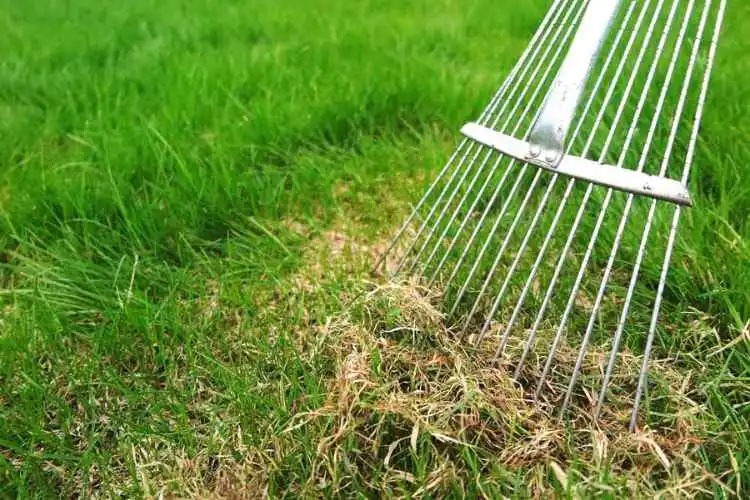
Then, in March, July, September, and December, feed your lawn cottonseed meal and menhaden fish meal to rejuvenate it. To remove thatch, you can also spread some sugar with a spreader and water it. In summer, the sugar feeds those beneficial bacteria and fungi, allowing them to multiply and consume thatch more quickly. Sprinkle dolomitic limestone each spring if the soil is acidic.
During the night, release some earthworms onto the lawn. This will enable them to tunnel into the lawn, lay eggs, eat clippings, and digest them into earthworm castings. With Ringer Lawn Restore – a slow-release organic fertilizer, and Calf-Manna, you can inoculate your lawn.
With just one application, they will add a range of beneficial bacteria and yeasts to break down the thatch. Because disease fungi are opportunistic and will attack only stressed lawns that are over-fertilized with nitrogen, a healthy lawn will not be vulnerable to fungi. Organically treating the thatch is cheaper and more effective.
frequently asked questions (fAQs)
Is it better to dethatch your lawn wet or dry?
It is better to dethatch your lawn when it is dry. Dethatching when the lawn is wet can cause compaction and damage to the grass.
What should I do after I dethatch my lawn?
After dethatching your lawn, you should rake up the debris and fertilize and water it to help it recover. You may also want to aerate the lawn to help the soil absorb water and nutrients more effectively.
When should I dethatch my lawn?
Spring or fall is the best time to dethatch your lawn. These times, the grasses are in their growing phase. Dethatching in the summer can be too stressful for the grass and cause it to become weak and vulnerable to disease.
Does dethatching help with weeds?
Dethatching can help reduce the number of weeds in your lawn by removing the layer of thatch that can provide a hospitable environment for weed seeds to germinate. However, it is important to use a weed control product to help prevent weeds from returning.
Will grass grow back after dethatching?
Yes, grass will grow back after dethatching. Dethatching removes the layer of dead grass and debris that accumulates on the soil surface. This layer of debris can prevent water, air, and nutrients from reaching the grassroots, so dethatching can help improve the health of the lawn. After dethatching, the grass should grow back within a few weeks.
Conclusion:
Dethatching lawns can benefit a homeowner by helping to promote better grass growth and reducing the number of weeds in the lawn. However, dethatching can be labor-intensive and damage the lawn if done incorrectly. Homeowners should weigh the pros and cons of dethatching before choosing, as it may not be the best choice for every lawn.
